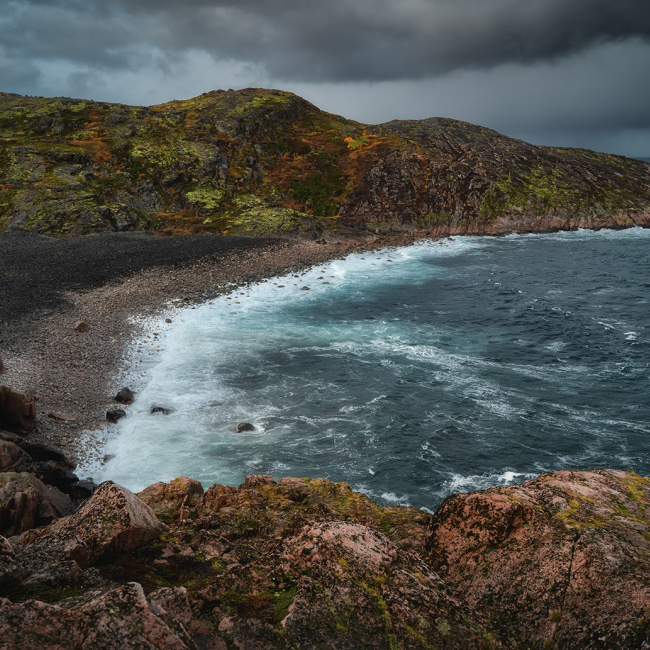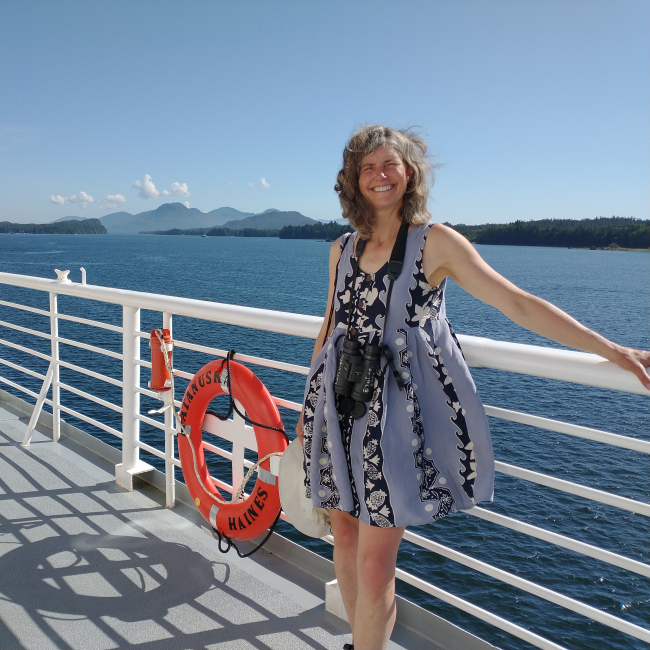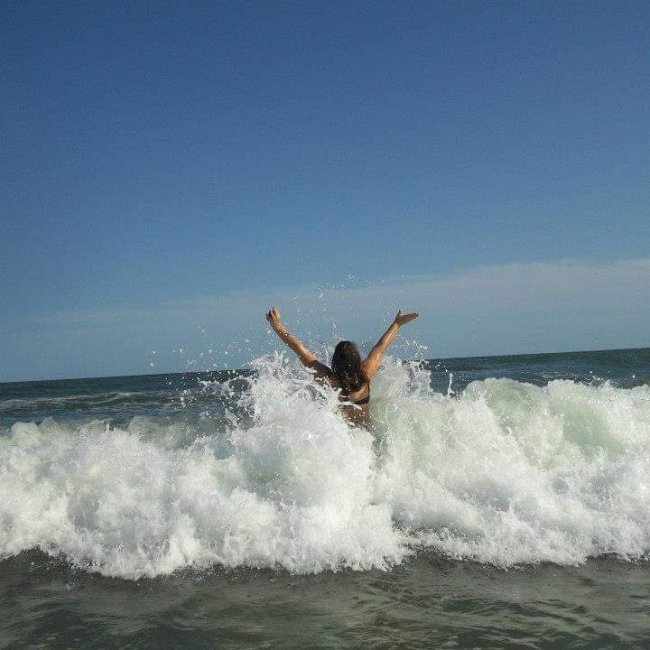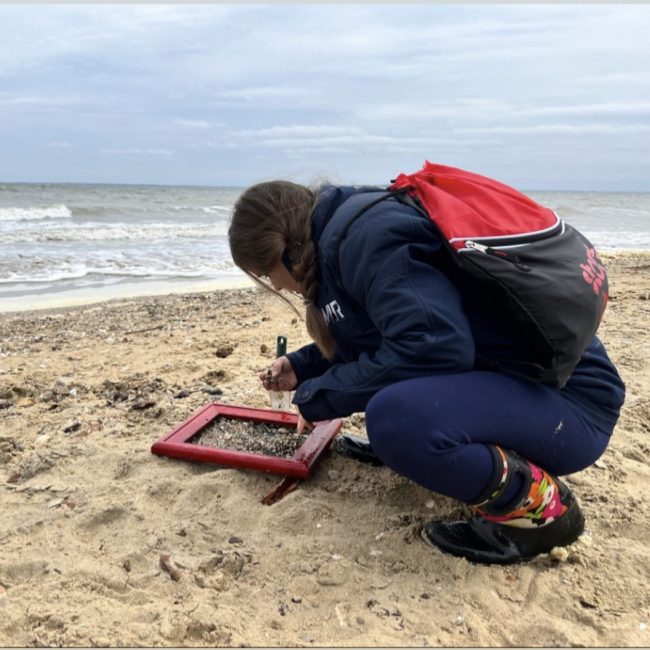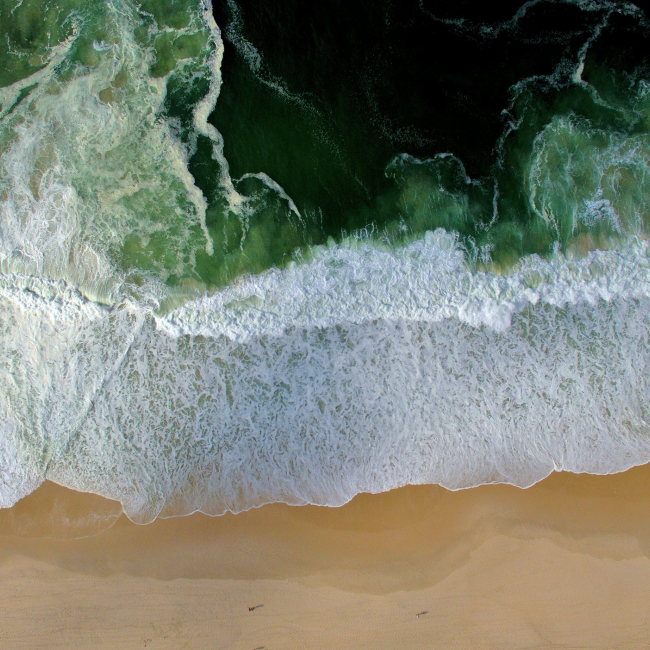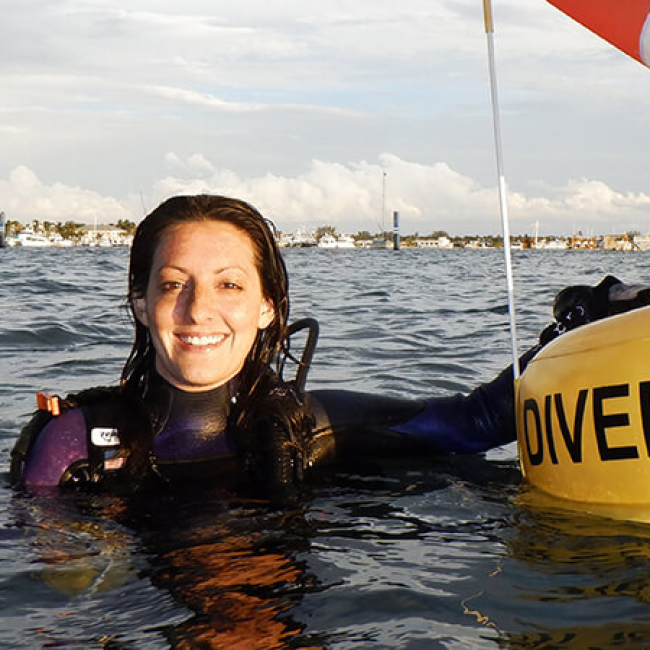For Ocean Month, we're honoring our connection to the ocean.
When you think of the ocean, what comes to mind? Are you drawn to the mysteries of the deep ocean — creatures and landforms waiting to be explored? Are you following the forecasts to see how a developing El Niño in the Pacific Ocean will affect the weather where you live? Maybe you’ve thought about that pull on your heart strings that seems to tighten when you’re standing in the sand, taking in the views of the ocean blue.
We connect with the ocean in a way that goes beyond knowledge and basic appreciation. The ocean makes us feel deeply, and we associate it with times and places attached to our memories. At the same time, these thoughts, feelings, and memories give us opportunities to expand our understanding of the ocean.
This ocean month, we honor this connection by exploring how our memories tie into the seven ocean literacy principles offsite link. As you read responses from NOAA staff below, we encourage you to think about how your own memories connect, too.
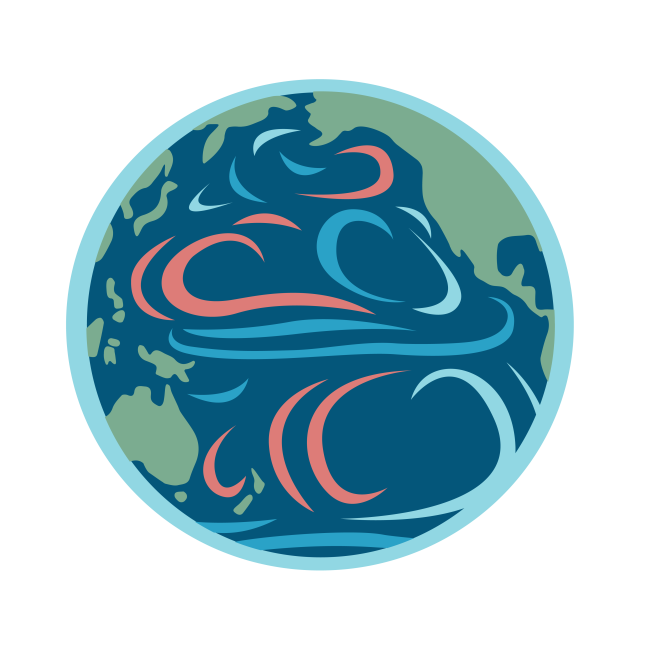
#1. Earth has one big ocean with many features.
If you could watch planet Earth rotate from space, there’d be a time each day where nearly all you could see beneath the clouds would be blue ocean water, our one big ocean. Approximately 70% of the surface of our planet is covered by the ocean, and for this year’s celebration, it’s time to put the ocean first. After all, the ‘Tides are Changing offsite link.’ Learn more about Ocean Literacy Principle #1 offsite link.
Juan Pablo Hurtado Padilla
Science On a Sphere Manager, NOAA Office of Education
I was born in La Paz, Bolivia, at 12,000 feet above sea level and 200 miles away from the closest shore. Unfortunately, Bolivia is a land-locked country so it is very difficult to get to the ocean — I had to wait almost 30 years to do that. I remember growing up I saw pictures, maps, movies, etc. about the ocean but I still had a hard time picturing it. The first time I saw it it was magical, I was in awe about its vastness and beauty. The wait was definitely worth it. The ocean is one of the things that connects us all. Its vastness holds so many different ecosystems and diversity. As far away as you can be from the ocean, the ocean still touches your life.
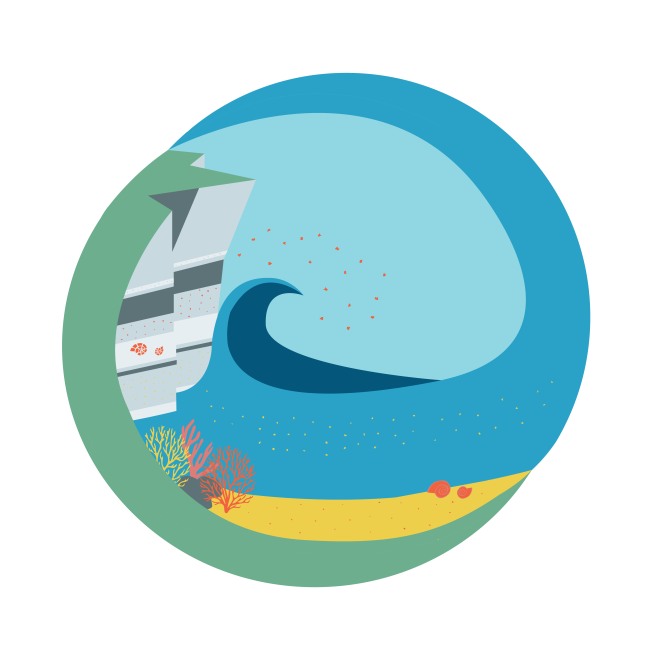
#2. The ocean and life in the ocean shape the features of Earth.
Land at the edge of the sea is always changing. The ocean erodes coastlines, transports sediment, and shapes continents. Even far from shore, many of the sedimentary rocks we see on land are made up of life forms that lived and died in the ocean millions of years ago. For example, limestone forms at the bottom of the ocean and is made in part by shells left by dead marine animals. Learn more about Ocean Literacy Principle #2 offsite link.
Marissa Jones
Communication Coordinator, NOAA Office of Education
I grew up in Pacifica, California, a beach town where the ocean's influence on land was never far from our minds. During big storms, my dad would take me down to the beach so we could watch massive breaking waves roll in off of the Pacific, crashing into the pilings on the pier and drenching cars that parked along the sea wall. Events like these left our town changed. Some of these changes were sudden and dramatic, like when houses have fallen off of cliffs that eroded during big storms. Other changes have crept up on me, like seeing a picnic area that was grassy when I was a kid now covered in drifts of sand as a result of rising sea level and shifting shorelines. Visiting home only once a year, if I'm lucky, I've watched the land change in response to the ocean as if in stop-motion animation.
Submission 1 of 2.
Will Lyons
John A. Knauss Marine Policy Fellow, NOAA Office of Education
The ocean invigorates my sense of touch through its warm, cool waters and gritty, sandy beaches. I love to hear the waterfowl flying overhead, chirping; and the flushing waves that swish like a constant saltwater rinse. I can smell the freshness of sea creatures and their life processes as well as the plants nearby on the sand dunes that protect the inland from drifting away as powerful water invades the shoreline.
Submission 2 of 2.
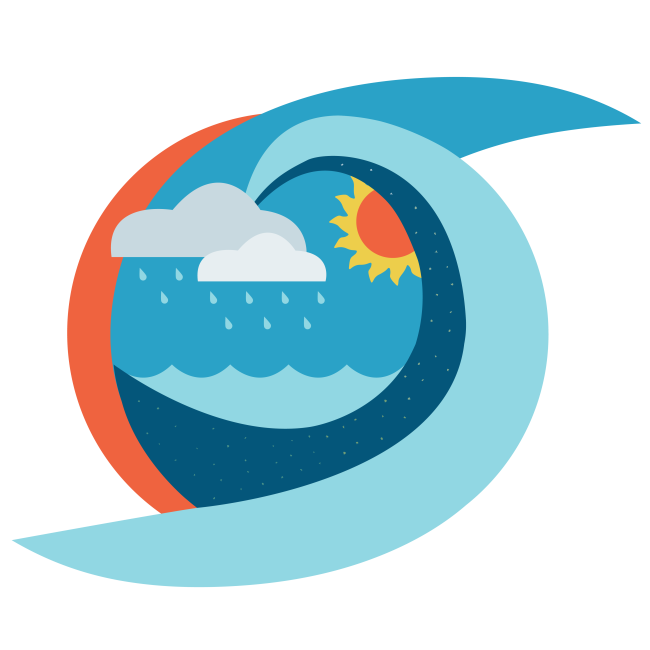
#3. The ocean is a major influence on weather and climate.
The next time you feel a raindrop, consider this: Most of the rain that falls on land originally evaporated from the tropical ocean. No matter where you are, the ocean has a significant influence on weather and climate by absorbing, storing, and moving heat, carbon, and water around the planet. Learn more about Ocean Literacy Principle #3 offsite link.
Denise Harrington
2022-23 NOAA Teacher at Sea Alumni Association Fellow
There is no better place to absorb the role of the ocean on climate patterns than living out of a 17-foot kayak along the southeast Alaska coastline. Prince of Wales Island boasts an average of 99 inches of rainfall a year, supporting dense, mossy old growth forests — perfect shelters for a weary paddler — and robust, gorgeous waterfalls, making dehydration a non-issue. It was no surprise, then, when we found ourselves paddling in the midst of an atmospheric river, raining for nearly a month straight. It wasn’t until our last day on the water that the sun came out in full glory, taunting us. I took the shift in weather as a challenge and dug deep in my bag. There, at the bottom, I found and donned a sundress I had been saving for a moment like this, as if I were on a cruise in Hawaiʻi.
Coastal and ocean ecosystems play crucial roles in modulating climate extremes through the water cycle, oceanic carbon (or blue carbon) cycle, and in many other ways. Our resilience and adaptability to climate change depends upon our ability to maximize our understanding of these systems through research and respond in a way that protects and preserves oceanic and coastal habitats. Also, it never hurts to carry along good humor, hope, and a sundress!
Submission 1 of 2.
Kayla Smith
Communication and Outreach Specialist, NOAA Office of Education
When I was in elementary and middle school growing up in Kentucky, I was severely afraid of storms. I had a very close connection with my Grandpa Jack during this time — he lived on the East Coast of Florida. If I heard an inkling of a weather report that mentioned bad weather in Florida, I’d call him immediately to make sure he was okay. He’d say, “Stinky, the storm hasn’t even gotten here yet!” and would promise to keep me updated on the weather in his area. This anxiety-ridden obsession about my grandpa’s local weather kept me tuned into the weather channel, and I’d watch as long storms moved up from the coast of Florida, get weaker, and sometimes dump rain as an aftermath where I lived in Kentucky. I found it fascinating that the storms I worried about in his area eventually made it to my area — another connection we could share together. Now, I love a good thunderstorm, and think of him every time one rolls in.
Submission 2 of 2.
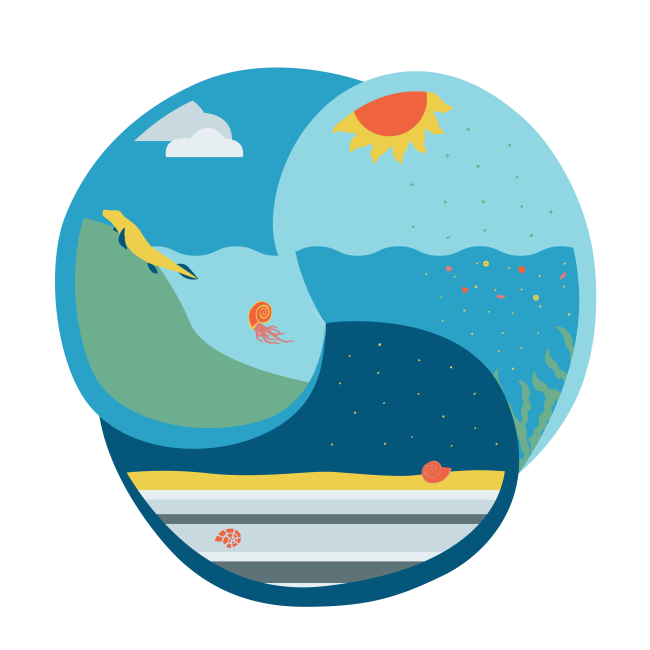
#4. The ocean makes Earth habitable.
Hundreds of millions of years ago, early photosynthetic life forms in the ocean transformed our planet, converting carbon dioxide in the atmosphere into oxygen. This change made it possible for Earth to support life as we know it. The ocean continues to provide essential ingredients for life on land and at sea, including water, oxygen, and other nutrients. Learn more about Ocean Literacy Principle #4 offsite link.
Audrey Maran, Ph.D.
Communication Specialist, NOAA Office of Education
During family vacations to the ocean, I loved to crouch at the shoreline and scuttle after each receding wave. I’d scan everything it left behind to grab the good stuff for a closer look, from shells and rocks to seaweed or little mussels digging back down into the sand. Having grown up in the midwest, I learned about the ocean in a similar way — grabbing bits and pieces of knowledge that washed up in classes, books, or online. As I got older, a central theme about the ocean began to emerge: it made life on Earth possible, both historically and today. Early on, I learned that life likely formed in the ocean 3.5 million years ago and evolved from there to live on land. But, the story became more complex: the ocean wasn’t only the nursery, it also made life on land possible! Photosynthetic ocean life absorbed carbon dioxide and released oxygen, which created a new type of atmosphere and led to the ozone layer that protects life on land from UV radiation. I later found out that, even today, photosynthetic organisms in the ocean make approximately half of the oxygen on Earth. Now, it seems like every topic I learn about acts like a receding wave, revealing another way that the ocean makes Earth habitable — it influences weather and climate, absorbs carbon dioxide, feeds us, transports energy, and even improves our mental health. I can’t wait to see what washes up next.
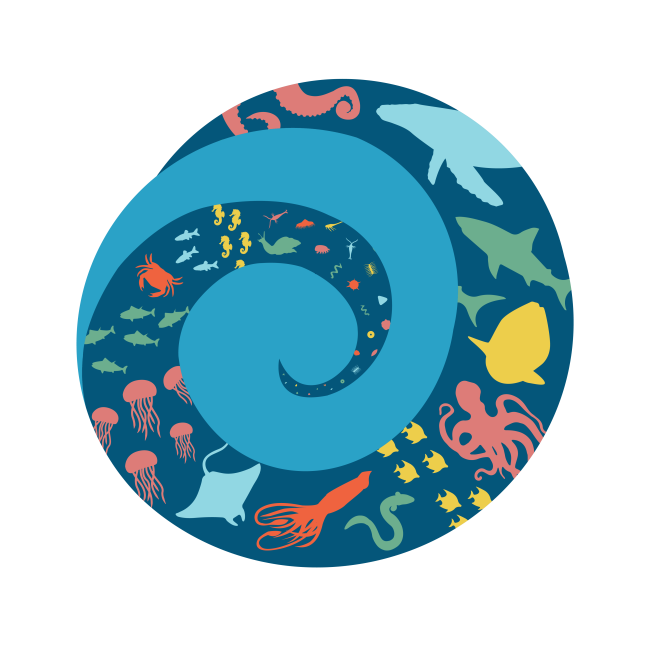
#5. The ocean supports a great diversity of life and ecosystems.
The ocean is the largest living space on Earth, home to creatures ranging in size from microbes to blue whales. Variations in physical conditions like light and temperature create many different habitats across the global ocean. There are coral reefs that are home to some of the most abundant life on the planet, open ocean areas with relatively few species, and deep sea hydrothermal vents that rely on chemicals, rather than the sun, for energy. Learn more about Ocean Literacy Principle #5 offsite link.
Lauren Gibson, Ph.D.
Special Advisor on Youth Engagement, NOAA Office of the Under Secretary
Growing up in a landlocked state, I didn't have a ton of ocean experiences as a child. When I was in college, I jumped on the opportunity to study abroad in Australia. When I went snorkeling on the Great Barrier Reef for the first time, I was absolutely blown away by the diversity of life hiding underneath the ocean surface. So many species, so many colors! And the amazement was there every single time I went snorkeling after that, too. I remember trying to sneak in three snorkels in a day — one at sunrise, one during lunch break, and one at sunset — because I couldn't get enough of it. Swimming alongside the turtles, sharks, and fish made me feel so connected to that underwater world. Spending time on the Great Barrier Reef exposed me to more marine biodiversity than I ever realized existed. Swimming through areas of thriving coral was magical, and finding areas where corals were suffering from coral bleaching due to warmer, more acidic ocean water made it painfully clear how much our actions as humans are dampening this magic.
Submission 1 of 3.
Diana Burich
Director of Education, New Jersey Sea Grant
Some of my earliest memories involve visiting my great aunt and uncle out on the east end of Long Island and spending countless hours bent over in the shallows of the Sound exploring the underwater world with either my hands or a mask and snorkel. I was probably five years old when I managed to catch a juvenile bay scallop in a small Dixie cup, and I spent what seemed like hours observing its appearance and behavior. How it used a jerky motion to swim away from my finger fascinated me, and even more so the presence of those tiny tentacles and all of those blue eyes — so many! I wanted to know how it lived, what it ate, what ate it, and what its purpose was, but I was mostly joyous and confident that I met a kindred spirit. I can still clearly see it in my memory today, and this is the story that I tell students of how I became inspired to pursue my biology degree and what ultimately led me to a career with Sea Grant.
Submission 2 of 3.
Grace Simpkins
Marine Education Specialist, Woods Hole Sea Grant
All my life I have enjoyed going quahogging (clamming) in a saltwater pond near our house. I love harvesting my dinner and always enjoy seeing the diversity of life in the pond. I'm old school and use my feet to find the quahogs and am quite the clammer! I learned my craft from my father and have gone on to teach my husband and kids how to do the same. My relationship with the ocean is multilayered. I love putting on my snorkel and mask and watching all the amazing organisms scurrying around, and I love the peace of being on the beach listening to the waves and watching the shorebirds busy finding food.
Submission 3 of 3.
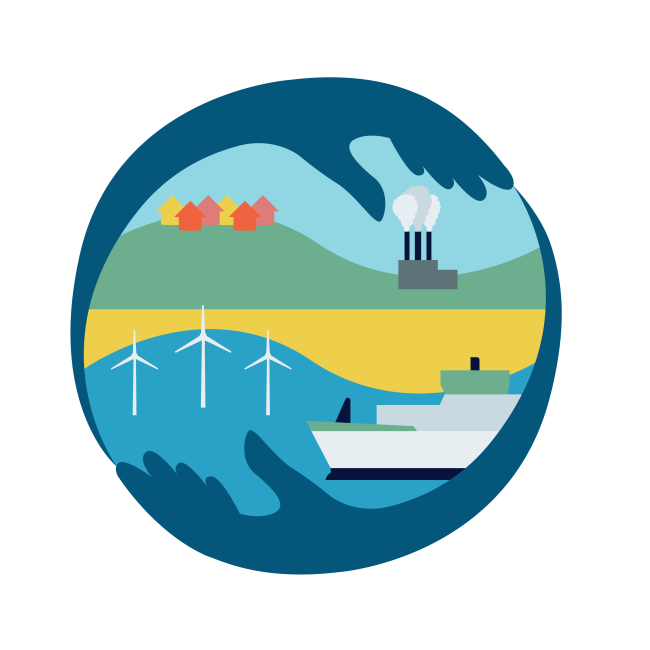
#6. The ocean and humans are inextricably interconnected.
The ocean sustains human life on many levels: it moderates the climate, supports jobs and economies, and is a source of cultural heritage for people around the world. But human activities are also impacting the ocean on many levels. Individual and collective actions are needed to manage and protect these resources for all. Learn more about Ocean Literacy Principle #6 offsite link.
Maggie Allen
Education and Grants Specialist, NOAA Office of Education
I've lived in a lot of different places, but no matter where I am, the ocean makes me feel like I'm home. And the fact it can be so different yet still the same one ocean wherever you may be, is what makes it so special. Whether I'm teaching coral reef ecology in the Florida Keys, walking along the rugged Pacific Northwest coast, watching humpbacks in Australia or California, or wading through mangroves in the Indian Ocean, I feel connected to that place because of the ocean. Even if I'm kayaking on a river deep in Idaho or West Virginia, I know that all water leads to the sea and still feel a great sense of belonging. In the same vein, traveling around the world has also shown me how we are all connected by the same challenges — marine debris, climate change, biodiversity loss, and environmental injustices exist in every corner of the globe. This interconnectedness is why it's so important to protect the ocean and work together on these issues, and it's why I believe marine education is the key.
Submission 1 of 3.
Will Lyons
John A. Knauss Marine Policy Fellow, NOAA Office of Education
When I think of the ocean, I think about the crashing waves, the ocean mist that I can feel on my skin, and the endless blanket of cool blue water. It provides so many benefits for human life no matter whether you are near or far. The ocean has changed my outlook on what it is I can contribute to the world. It is a constant force for good and that's what I want to be for my loved ones and colleagues. It also shows me that I have a connection to others no matter where I am, just as the ocean does.
Submission 2 of 3.
Rachel Plunkett
Writer and Editor, NOAA Office of National Marine Sanctuaries
The ocean has guided me on my spiritual journey from the time I was a child, helping me to see and face my fears and grow beyond those limitations.
Submission 3 of 3.
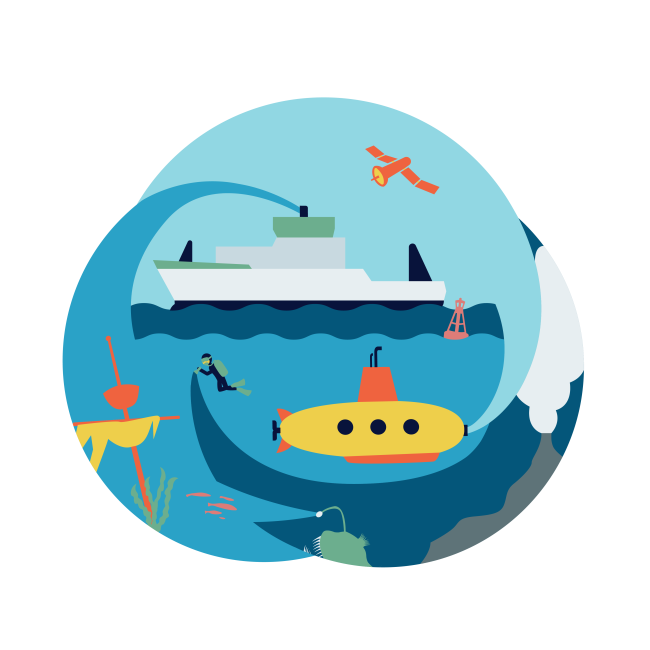
#7. The ocean is largely unexplored.
Despite all of the tools and technologies we have for studying the ocean — ships, satellites, submersibles, scuba, and more — more than 80% of our ocean is unmapped, unobserved, and unexplored. Ocean exploration is not only an opportunity for interdisciplinary innovation and discovery, but also the key to sustaining ocean resources in the face of increasing pressure from humans worldwide. Learn more about Ocean Literacy Principle #7 offsite link.
Rachel Plunkett
Writer and Editor, NOAA Office of National Marine Sanctuaries
When I was a little girl, the ocean was a vast and scary place. What if a jellyfish stings me, a crab pinches my toes, or a shark bites me? What if I get swept out to sea and nobody notices? As the years went on, my relationship to the ocean changed. I became more curious and rather than fearing the jellies, I gently touched them on the tops of their bells as they drifted by. Later, during college, I got my first scuba certification, and that unlocked a whole new world of possibilities. Today, you can't keep me out of the water! For me, the ocean transitioned from a place to be feared into a place to explore, play, and let go of my fears. My quest to dive deeper into the ocean — advancing my dive and underwater photography skills — has helped me develop more confidence and self trust, and in my roles as a writer and educator, I enjoy inspiring others to explore a similar relationship with our one big ocean.
Submission 1 of 2.
Will Lyons
John A. Knauss Marine Policy Fellow, NOAA Office of Education
I am fascinated by the ocean because much of it is unexplored. While studying marine biology I was introduced to large and distinct organisms that I never knew existed.
Submission 2 of 2.


